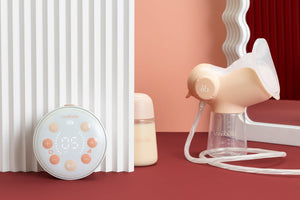Understanding insurance coverage for a breast pump can feel overwhelming for many new mothers. Between policy jargon, varying provider rules, and unclear benefits, it’s easy to feel lost. Yet, these details matter – a breast pump can cost hundreds of dollars without proper coverage.
Insurance policies often use unfamiliar terms like purchase, rental, or durable medical equipment. Knowing what these mean ensures you receive the benefits you’re entitled to under your plan.
This guide breaks down everything you need to know about insurance coverage for breast pumps, including manual, electric, and hospital-grade options. By learning how coverage works, you can make confident, informed choices before you buy or request a pump.
Understanding Insurance Coverage for Breast Pumps
The Affordable Care Act (ACA) requires most insurance plans to cover breastfeeding support and supplies, including breast pumps. This federal law helps mothers access essential equipment without additional cost. It also ensures that breastfeeding counseling is available, making feeding support part of preventive healthcare, not a luxury.
Still, insurance coverage for a breast pump can vary widely. Private insurance, employer-based plans, and Medicaid each set their own rules for reimbursement. Some plans fully cover one breast pump per pregnancy, while others offer partial coverage or only rentals. Certain providers may require you to order through approved medical suppliers or show a doctor’s note.
The ACA provides the foundation, but individual plan policies decide the details. Understanding your benefits prevents out-of-pocket surprises and ensures timely access to the pump that fits your needs. Knowing exactly how your policy defines coverage helps you choose confidently and make full use of your insurance rights.
Key Terms You’ll See in Your Policy
Understanding insurance coverage for a breast pump begins with learning the key terms your policy uses. Many insurance plans use technical language that can make it hard for mothers to know what’s actually covered. Taking time to read these definitions helps you make confident choices, avoid unnecessary costs, and ensure your benefits apply correctly.
Purchase coverage means your insurance plan pays for you to own a breast pump. Some policies cover the full amount, while others reimburse a set portion, such as $150 or $200. Always confirm whether the plan pays upfront or reimburses after purchase. Rental coverage applies when your insurance provides a hospital-grade pump for short-term use. This is common when medical needs arise, such as premature birth, low supply, or mastitis recovery. Rentals may need prior authorization or a doctor’s note. Pumps are listed as Durable Medical Equipment (DME) in most policies, so check that section for details.
It’s also important to use in-network suppliers, since out-of-network purchases may not qualify for reimbursement. Review the limitations and exclusions carefully. Most plans only cover one pump per pregnancy or once every 36 months, and some may restrict eligible models. A quick review of these terms can prevent frustration and delays. Understanding this language gives mothers peace of mind and helps them make informed decisions when choosing a breast pump through insurance.
Manual vs. Electric vs. Hospital-Grade: What’s Covered?
Insurance coverage for a breast pump depends on your plan’s details and the type of pump you choose. Most policies group pumps into three main categories (manual, electric, and hospital-grade) and each has its own coverage rules. Understanding these differences helps mothers pick the right option while avoiding surprise costs.
Manual breast pumps are the simplest and are almost always covered. They’re light, affordable, and perfect for occasional use or travel. Because they qualify as standard durable medical equipment, most plans include at least one manual pump per pregnancy with minimal restrictions. Electric breast pumps, whether single or double, are the most popular choice among new mothers. Many insurers fully cover a basic electric model after delivery or offer partial reimbursement if purchased independently. Some allow upgrades for a higher-end model if the mother pays the difference, so it’s worth confirming brand and supplier limits before ordering.
Hospital-grade pumps are high-powered units often used in medical situations, such as for premature babies or when milk supply needs extra support. These are typically covered as rentals and require a doctor’s note or prior authorization. Rental periods vary by plan – some last a few weeks, others several months. Knowing how each type is classified helps mothers confidently use their insurance coverage for breast pumps to meet both medical and personal feeding needs.
Common Real-Life Scenarios
Understanding insurance coverage for breast pumps becomes clearer when you see how it applies in everyday situations. For example, a mother with a premature baby may need a hospital-grade rental to establish her supply. Her doctor provides a medical necessity note, and her insurer approves the rental. The plan covers the hospital-grade pump for several months, allowing her to transition to a personal-use electric model once breastfeeding stabilizes.
Another mother returning to work purchases a double electric pump for convenience and efficiency. She pays upfront, submits her receipt, and receives partial reimbursement based on her plan’s allowance. Because she verified her coverage beforehand, she avoids surprise costs or claim denials. Documentation and pre-approval often save time and reduce stress.
Sometimes, coverage limitations create frustration. A mother who requests a second pump within two years may be denied if her plan covers only one every 36 months. Staying organized helps prevent issues, keep receipts, note coverage timelines, and ask your provider to confirm eligibility before reordering. Real-life preparation turns complex insurance language into confident, informed choices that help mothers use their coverage fully and with peace of mind.
How to Verify and Maximize Your Coverage
Before buying a pump, confirm your insurance coverage for a breast pump to avoid unexpected bills or denials. Contact your insurance provider or check your online member portal for benefit details.
Ask specifically for “Durable Medical Equipment” or “DME breast pump coverage.” Confirm which models and suppliers are approved as in-network. Some plans limit coverage to certain brands or require a doctor’s prescription before shipment.
Request written confirmation of coverage limits, rental periods, and replacement intervals. Keep digital copies of receipts, prescriptions, and approval letters for easy reimbursement. Taking these steps ensures full benefit use and smoother claims, saving time, stress, and unnecessary expenses.
Are You Sure with Your Insurance?
Decoding insurance coverage for breast pumps can feel overwhelming, but clarity brings confidence. Understanding your plan’s terms helps you make the most of every benefit available.
By confirming eligibility, saving documentation, and asking questions early, you can avoid denials and delays. With a little preparation, mothers can access the right pump, save money, and focus on what truly matters, nourishing their baby with peace of mind.







